Indoor palm plants can fill our home with a tropical feeling, reminding us of sandy beaches, sunny skies, and warm days.
These beautiful potted plants also provide a bold, dramatic, shape to a bedroom or living room, or any other corner of the house. One of the easiest houseplants to grow, palms live for years if given moderate light, average humidity, and consistent moisture.
We present you with this list of popular indoor palm plants that will add extra beauty to your home.
1. Areca Palm
Areca Palm, also known as Chrysalidocarpus Lutescens is for lazy plant people. This palm is a fast-growing plant that tolerates low light. These beautiful plants have large, feathery fronds on gentle stems.
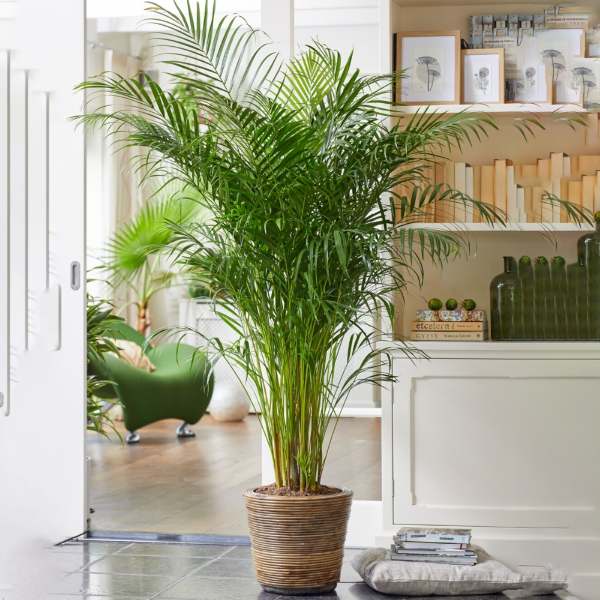
If given the right conditions, i.e. three or four hours of bright, indirect sunlight, consistent moisture, and well-drained soil and can outgrow their space in a few years. Indoor areca palms usually grow up to 6 to 7 feet tall
2. Fishtail Palm
Fishtail Palm scientifically known as Caryotasapp consists of wide, ragged edges shaped like a fishtail, hence got its name. They get up to 20 feet tall in a pot so they need a good amount of space to flourish. Once settled, these plants can grow up to 2 feet a year.
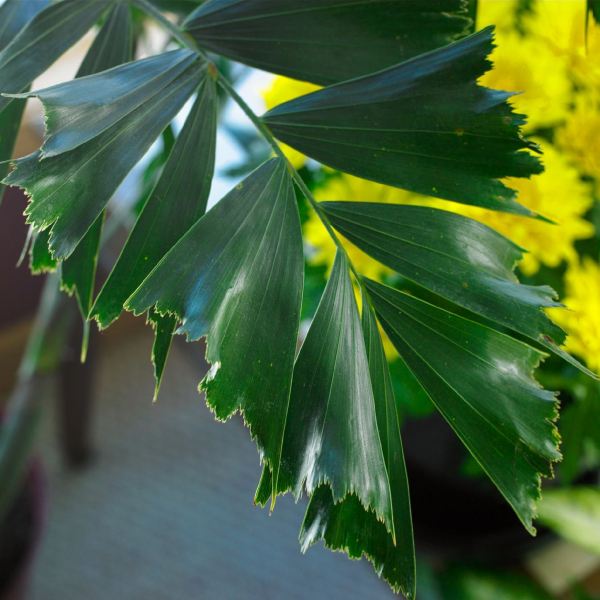
One can limit a fishtail palm’s growth by letting it get a bit root-bound and it will grow to its pot size. One care tip for this plant is to keep it away from air drafts since it is fussier about humidity than other indoor plants. You can also keep its container on top of a pebble tray filled with water or use a humidifier to keep it in good form.
3. Parlor Palm
These plants have thin stems that grow in clumps and elegant feathery fonts. Scientifically known as Chamaedorea elegans, these are the classic palms featured in Victorian parlors whose houseplants first became popular in the later half of the 19th century.
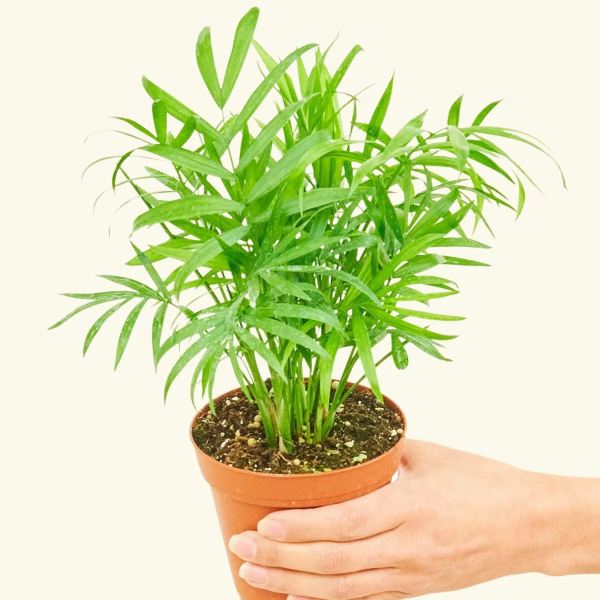
Luckily, these plants tolerate low light and moderate humidity, making them unfussy plants and such popular houseplants. Talking about their growth, they usually grow up to 3 to 4 feet tall when grown in a container. However, they grow to their pot size so do not worry if you have a small space. You can still keep a foot-tall parlor palm on your desk, nightstand, and small corners of your house.
4. Cat Palm
One of the easiest palms to grow indoors, the Cat palm is scientifically known as Chamaedorea cataract arum needs infrequent watering and indirect light to survive and thrive. It is a Southern Mexico and Central America native that grows in clumps of compact stems with fine green fronds.
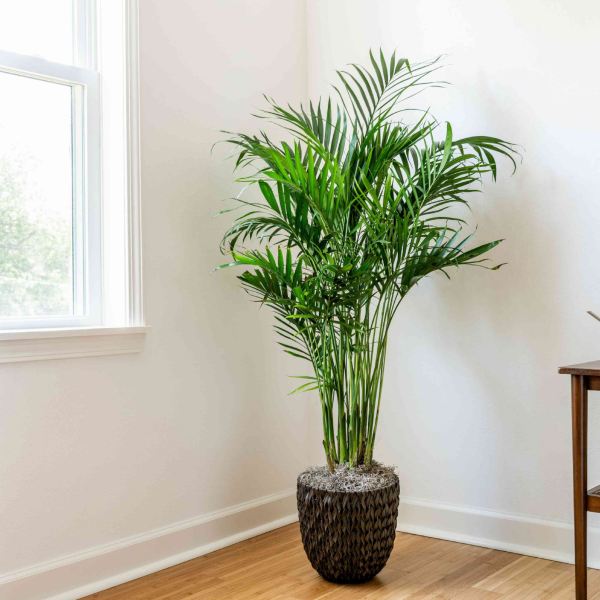
This species can grow fuller and bushier as they age. It would be a great idea to keep them near a window and you might soon see it fill the space. It is wide but not tall, growing a maximum of 3 feet when grown indoors.
5. Kentia Palm
Kentia Palm(Howea forsteriana) is a native Australian plant that works greatly as a houseplant. Despite its slow growth, it can reach up to 10 feet tall indoors.
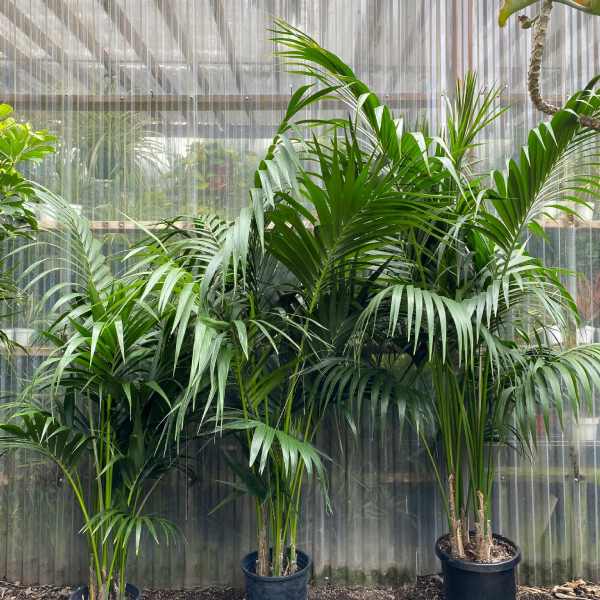
This beautiful plant’s feathery fonds reach up to a foot long on long, gracefully arched stems. If kept inside, this beauty will add eye-catching height to your houseplant jungle. Give it bright, indirect light, moderate humidity, and regular moisture so that it thrives better. Because Kentia palm hates winter, you need to go a little easy on the water and skip fertilizer at the time.
6. Majesty Palm
This plant is a very easy indoor plant to have because it tolerates low light conditions but is slow-growing. It is the perfect indoor plant for rooms with less sunlight and limited space.
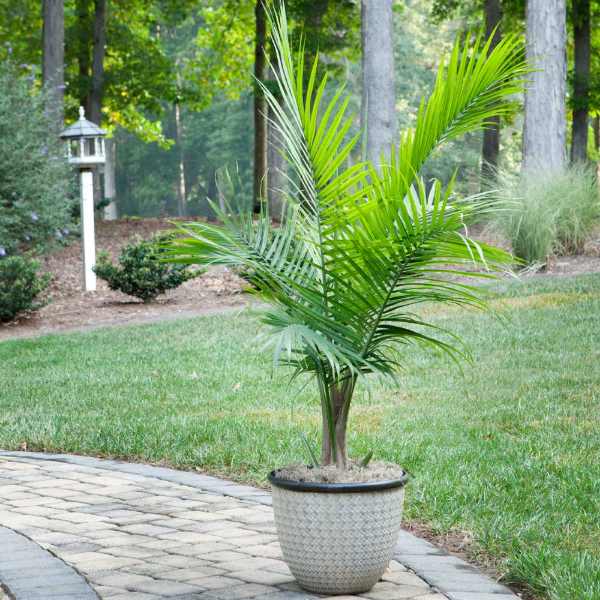
Talking about its appearance, Majesty palm has graceful, feathery fronds on gently arched stems. If provided the right conditions, it can grow up to 10 feet tall.
7. Windmill Palm
This palm is more cold-hardy than most other palms. It is impressively able to live outdoors in USDA Hardiness Zone 7 and warmer. When grown indoors, they can top out at around 10 feet tall. This plant has stiff, fan-like green fronds with black fibers covering its trunk.
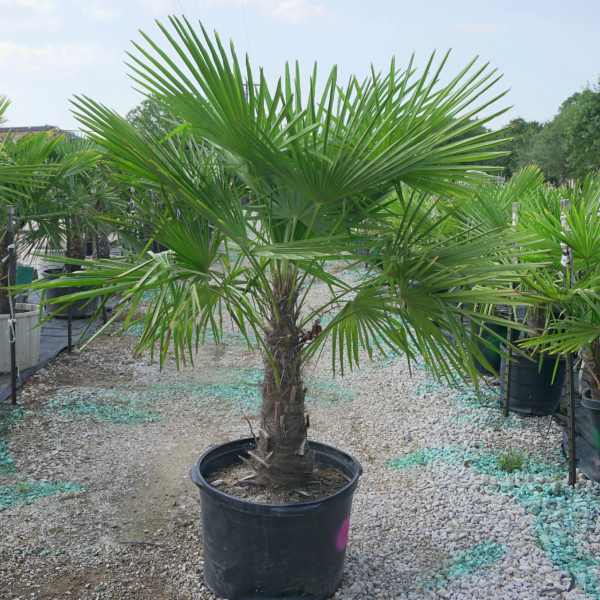
Despite being a slow-growing plant, it adds a great shape to a room when grown in a floor container. When given the right amount of indirect sunlight, well-drained soil, and consistent moisture, it thrives as a houseplant.
8. Lady Palm
Lady Palm is one of the oldest houseplants which has been grown as a houseplant for more than 400 years. In Japan, people grew it around the 1600s and Americans grew them as parlor palms during the Victorian Era.
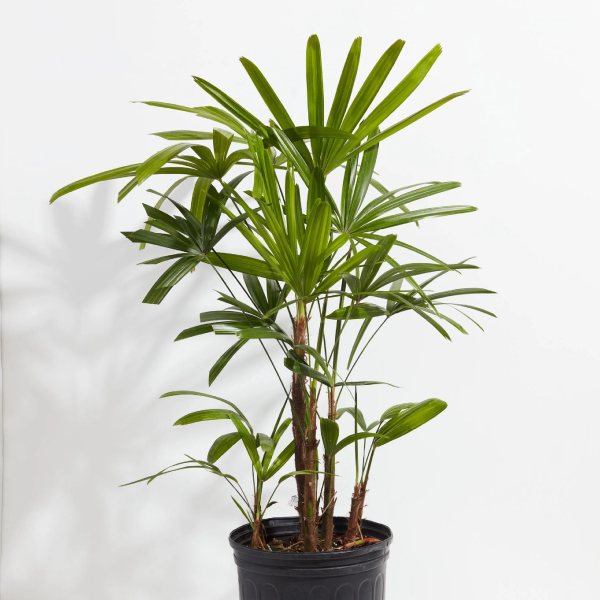
It has glossy, fan-shaped leaves on sturdy stalks that grow up to 15 feet tall. It tolerates low light but thrives in bright indirect light. They can also tolerate cooler temperatures. They’re great options for placing near a front door that lets in drafts.
9. Bamboo Palm
Bamboo Palm is a narrow and tall plant with elegant, arched stems and feathery fronds. It can grow up to 8 feet tall and 2 feet wide. It makes this palm a good pick for small spaces where you need a plant.
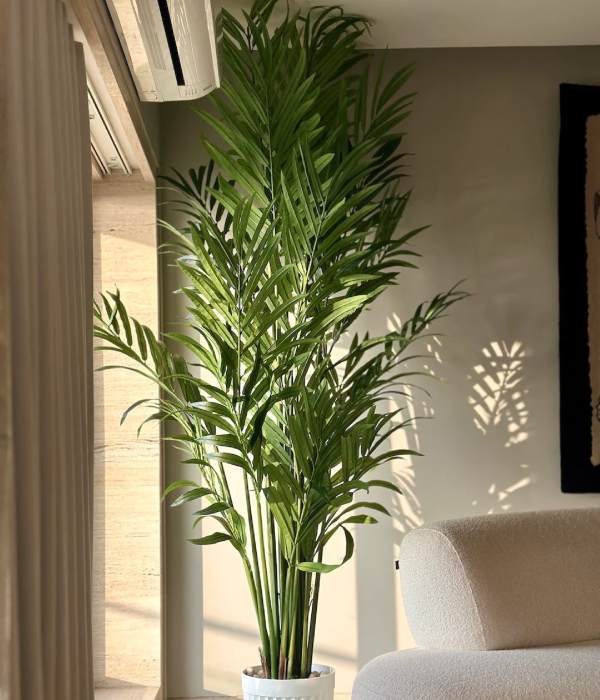
Its good shade tolerance means it will thrive equally well near a north-facing window as well as a brighter spot.
10. Pygmy Date Palm
The Pygmy date palm is a miniature version of the date palm tree that grows throughout the Middle East and American Southwest for date fruits. It has arching, feathery fronds, and a fine texture.
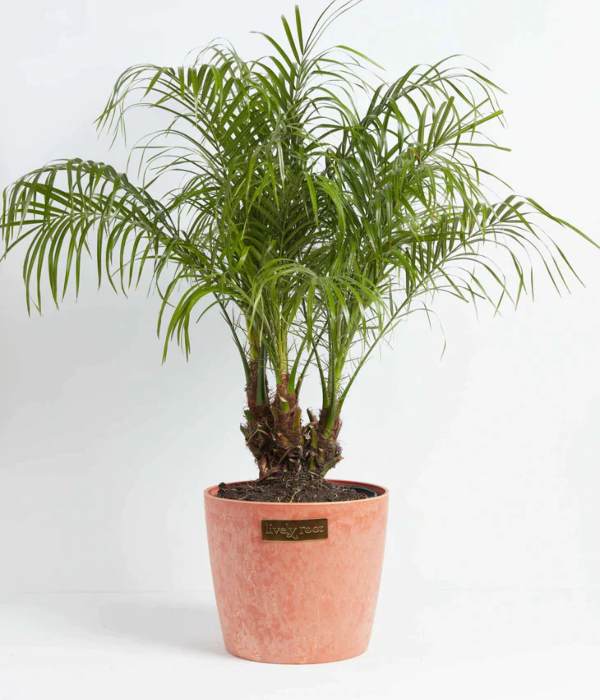
This beautiful plant can grow up to 8 feet tall indoors and they are very easy to grow too. All they need is well-drained soil, consistent moisture, and bright, indirect sunlight to thrive in a pot. For a better healthier plant, put the pygmy by an east window where it receives enough morning sun.
11. Ponytail Palm
While it has palm in its name, Ponytail Palm isn’t a palm at all. It’s a succulent that looks like a palm as it has ribbons of green leaves that cascade out of the top of a single, thick stem. It’s a happy-looking plant that gives your room a stunning look and an exotic feel.
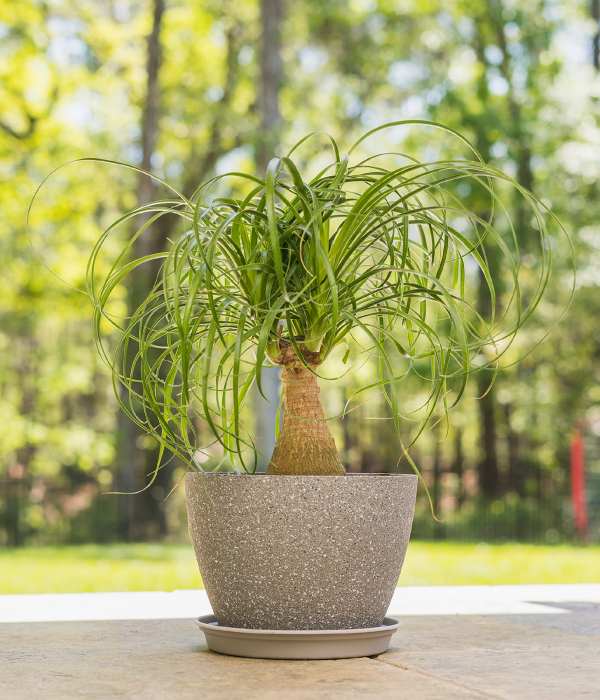
One great thing about ponytail palm is that it is an extremely drought-tolerant and tough houseplant since it stores water in its bulbous trunk. It is slow growing and can get up to 1 to 3 feet tall. When provided with bright light, well-drained soil, and the right temperatures, they can do pretty well.
Uses of palm plants
- Different palm plants have different uses.
- Tropical native people rely on palm trees for lots of things like food, shelter, oil, clothes, fuel, building materials, etc.
- Coconuts are one of the most important tropical crops which also produces oil for cooking.
- The coconut husk or outer covering is also used to make ropes and mats.
- Their shells are used to produce cups and bottles.
- Palms provide the best wax for perfumed candles.
FAQs
Q. How frequently do palm plants need fertilizers?
A: Unlike other plants, palm plants need fertilizers only once or twice a year, and that is in the spring and summer while it is growing.
Q. Are any of the palm plants harmful?
While most palm plants do not harm humans or animals, Sago palms are extremely harmful despite their harmless and inviting appearance.
Q. One tip for the leaves of palm plants brown or yellow leaves?
A: If the tips of the plant are turning brown just water the plants more regularly. However, you have to reduce watering if they turn yellow.
Here’s another list you may be interested in: Top 10 Best Microgreens to Grow at Home!
